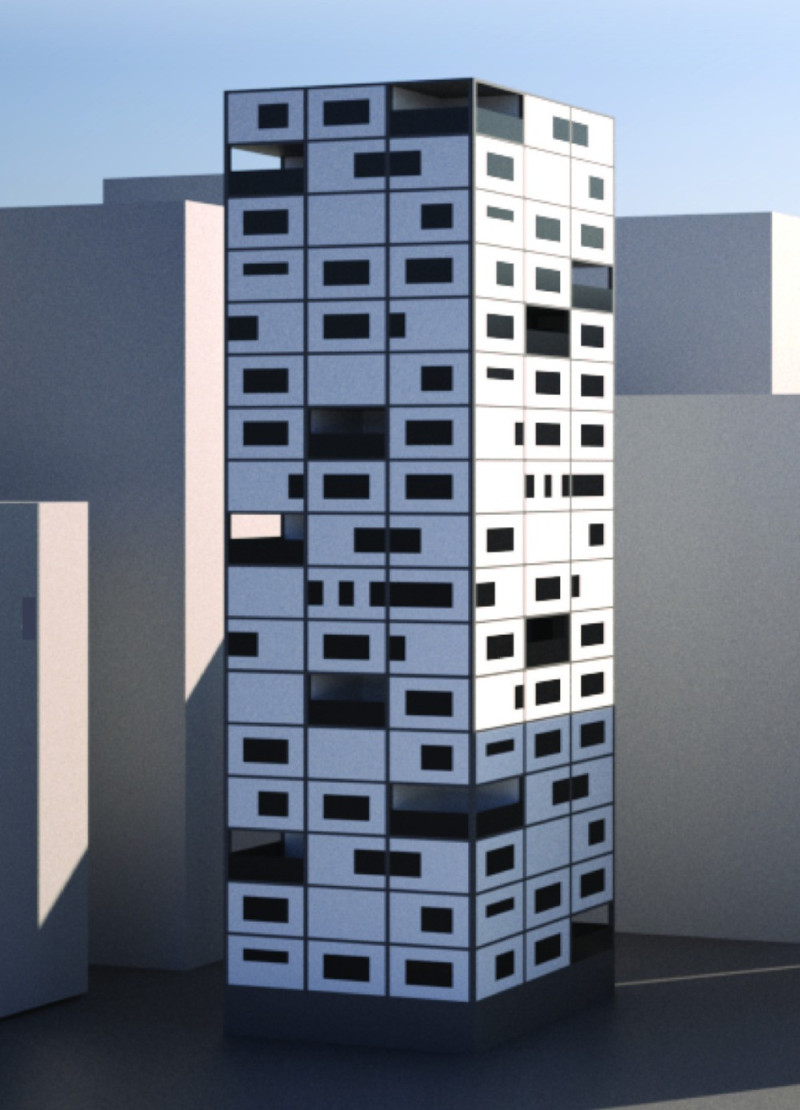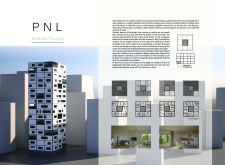5 key facts about this project
The PNL Modular Housing project is an architectural design aimed at providing adaptable residential spaces within urban environments. Emphasizing a modular approach, the project seeks to offer flexibility for varying household needs. Each unit is strategically designed to maximize space efficiency while providing a customizable living experience. This architectural initiative addresses contemporary urban housing challenges, focusing on sustainability and community integration.
Modularity and Customization The PNL project utilizes a modular structure that allows for different configurations of living spaces. Each module consists of a grid-based design, which can be assembled in various arrangements to cater to single occupants or families. This degree of flexibility is uncommon in traditional residential design, enabling quicker assembly and adaptation to specific site conditions and user requirements. Furthermore, the design includes prefabricated panels that not only enhance aesthetic appeal but also support functional aspects such as natural light distribution. The integration of vertical elements reinforces the compactness of the building, making effective use of urban land.
Sustainability and Material Selection A significant aspect of the PNL Modular Housing design is its commitment to sustainability through carefully selected materials. Reinforced concrete serves as the primary structural material, ensuring durability. Glass panels are employed strategically to optimize light while minimizing heat loss, thereby increasing energy efficiency. Additionally, steel frames may be utilized to improve structural integrity, allowing for rapid on-site assembly. The use of composite materials may also be incorporated for insulation and aesthetic purposes. This careful material selection highlights the project’s focus on environmental stewardship and occupant comfort.
Community Engagement and Interaction The architectural design promotes social interaction among residents. By incorporating communal areas within the modular framework, the project fosters a sense of community that is often missing in high-density urban living. The shared spaces are designed to encourage collaboration and interaction, providing residents with opportunities for social engagement. This focus on community is a defining element that sets the PNL project apart from conventional housing solutions.
For those interested in exploring the intricate details of the PNL Modular Housing project, please review the architectural plans, sections, designs, and ideas to gain a comprehensive understanding of its innovative approach to modern living.























